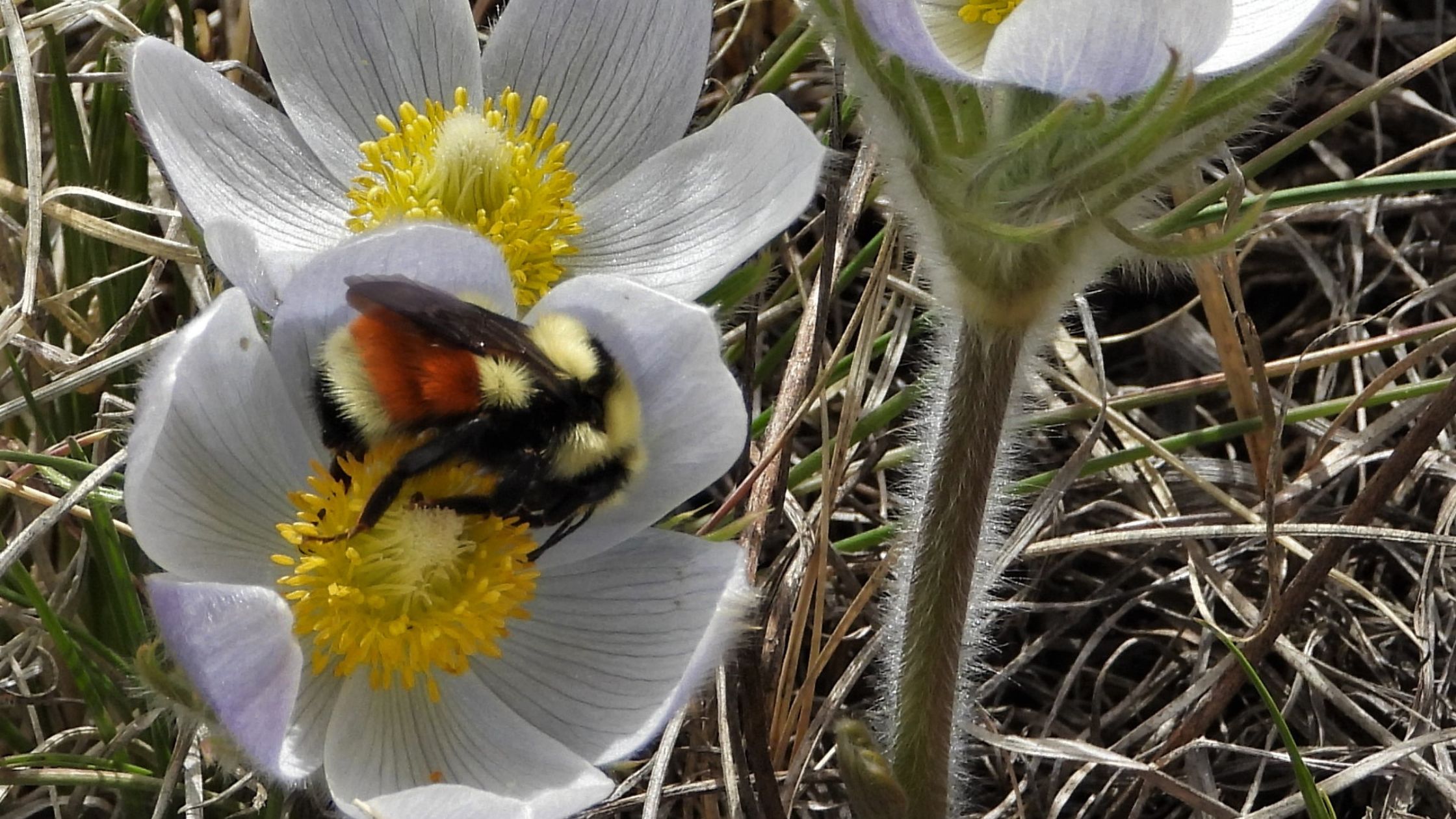Spring is finally arriving after this long season of cold weather we have had this year, and along with the flowers and the sunshine we are starting to notice an increase in one of my favorite clinical entities: the dog who was perfectly normal when he went outside in the morning and came back in with an incredibly swollen face and itchy bumps all over his body. I like seeing these patients because although the problem is dramatic in appearance the cause is often straightforward and easy to resolve quickly. Yes, spring is the opening of bee sting season.
There are many different species of bees and wasps that live in Colorado. Most tend to be mild-mannered and have much more pressing matters to attend to than flying around looking for a dog or a person to sting. Honeybees and most of our native bumblebees will generally mind their own business unless unduly provoked, say by being suddenly enveloped in the mouth of a curious dog who wonders if those wiggly little things taste good. Yellow jackets are much more pugnacious by nature and tend to send investigation parties out to buzz around anything they deem to be getting too close to their nest. The yellow jackets may think they are being intimidating, but to many dogs they are the prizes in the “catch-the-yellow-flying-things” game. Yellow jackets make those round paper-like hives under the eaves of the house, in the branches of trees, or under the deck. If you have a dog who is a serious repeat offender in the sting department you may want to go on a search of the property to see if you can locate and eliminate any yellow jacket nests that may be the source of the problem. Your dog may even show you where the nest is by paying obsessive attention to some corner of the house or area under the deck.
Allergic reactions to bee stings start within minutes of the sting. Certain cells within the body are triggered to release inflammatory agents that cause the swelling in the surrounding tissue and the itchiness of the hives. People have a very high concentration of these inflammatory cells in their lungs, so that is why bee stings can lead to a person’s airways swelling shut and a sudden life or death kind of crisis. Dogs have relatively few of these cells in their lungs. They have the highest concentration in their skin, followed next by their gastrointestinal tract, and the lowest levels in their lungs. The physiological reaction is essentially the same as it is in people, but the part of the body that is affected is different. In dogs the skin related symptoms are most common, sometimes accompanied by a bout of vomiting and diarrhea. Respiratory involvement, shock, and collapse as a result of a bee sting is exceedingly rare in dogs, and fortunately for dogs nobody tends to die from the embarrassment of having a fat face.
If you completely ignore the reaction it will usually subside in 4-12 hours with no serious consequences, however having eyelids nearly swollen shut and being maddeningly itchy for 12 hours is unnecessarily unpleasant, so the kindest thing to do is to get your dog some treatment. Your veterinarian can give an injection of benadryl, and depending on the severity of the symptoms some more powerful medications may be used as well. Usually the symptoms will be dramatically reduced within an hour.
One would think that after the unpleasantness that follows a bee sting the dog would get the picture and learn to leave the yellow flying things alone, but as is also the case in porcupine quills and skunk spraying, instead of giving the offending agents a wide berth on the next encounter, some dogs become even more determined to get that darned yellow jacket (or skunk, or porcupine). If the dog is incorrigible and the source of the stings can’t be identified and removed you may want to talk to your veterinarian about an appropriate dose of benadryl for your dog that you can have on hand to use when needed.
So enjoy the nice weather, and don’t forget to stop and smell the flowers. Just tell the dog not to eat the bees.


